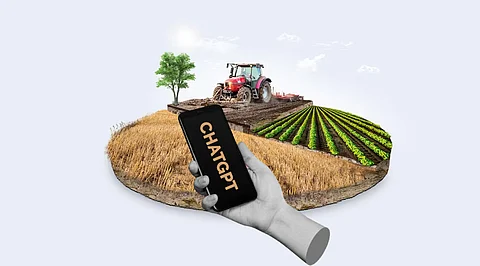
- Insights
- Cryptocurrencies
- Stocks
- White Papers
- Industry
- Geography
- Insights
- Cryptocurrencies
- Stocks
- White Papers
- Industry
- Geography


The majority of us have heard of chatbots. A chatbot is a computer program that is made to make people talk, especially over the internet. It is a computer program that uses Natural Language Processing (NLP) and Artificial Intelligence (AI) to understand customer questions and automate responses that encourage written or spoken human conversation. It makes it possible for humans to communicate with digital devices in the same way that they would with real people.
Recently, ChatGPT has been all over the news. In case you missed it, OpenAI'S ChatGPT is a type of artificial intelligence (AI). Data from books, articles, websites, and other publicly accessible text-type data are used to train ChatGPT. In a search bar, users can ask ChatGPT questions about almost anything, and ChatGPT will respond based on its training data. ChatGPT gets smarter about how it answers questions as it receives more training data. Presently, OpenAI's ChatGPT has arisen as a progressive innovation and a leading-edge approach to Man-made reasoning. Within its first five days of operation, ChatGPT attracted more than one million users. UBS, a Swiss bank, conducted an analysis that states; The app with the greatest rate of growth is ChatGPT. The examination gauges that ChatGPT had 100 million dynamic clients in January, just a brief time after its send-off.
ChatGPT says it will take over many manual tasks that involve writing text, like writing articles about specific topics. Since ChatGPT could easily write a book report on Charles Dickens's Tale of Two Cities, teachers, and professors appear to be the most immediately concerned about this technology.
If you ask ChatGPT about how it affects farming and watch what it says, the inquiry "What are the top five ways that ChatGPT will change agriculture in the United States?" was brought up in ChatGPT. The ways that ChatGPT will transform Agriculture are as followed:
ChatGPT's predictions would be pretty amazing to someone who knew nothing about agriculture. These predictions seem very knowledgeable and authoritative. However, if you peel back the veneer, you'll discover a sort of word salad that sounds impressive but has little meaning or depth. The majority of these five points simply repeat the same ideas about data analysis and prediction.
ChatGPT, on the other hand, is a pretty amazing technology with a lot of promise. It will only get better as it uses more agricultural data and more training data.
